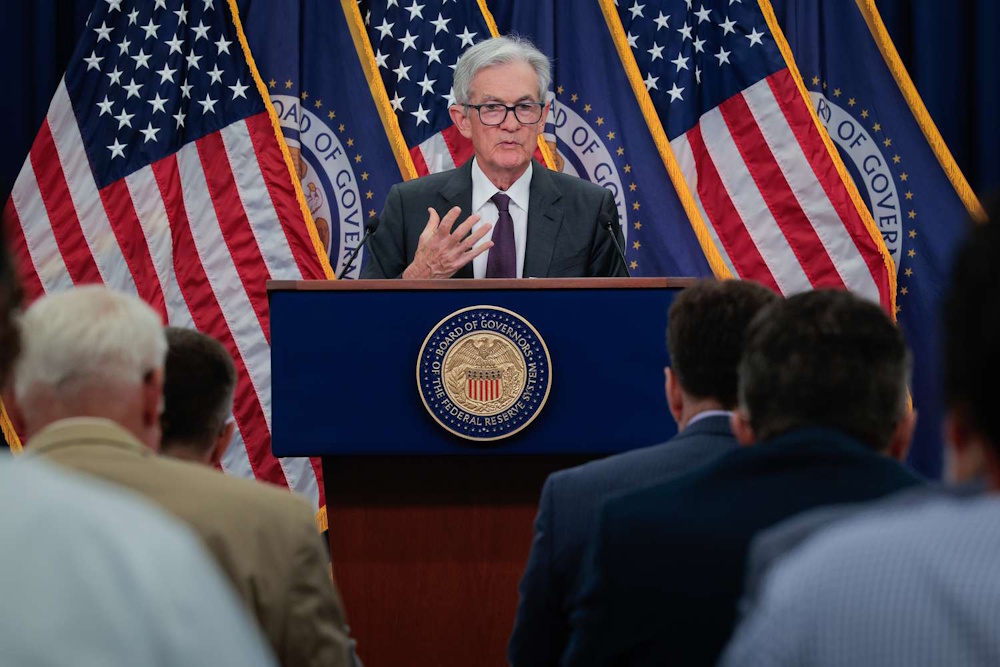
America’s central bankers are grappling with the dual pressures of potentially rising inflation alongside a decelerating labor market, as articulated by Federal Reserve Chair Jerome Powell on Tuesday, who described it as a “challenging situation” for Fed policymakers. However, at this moment, interest rates are positioned adequately to address either concern, Powell indicated, implying that he perceives no immediate need to significantly reduce rates. “The increased downside risks to employment have shifted the balance of risks to achieving our goals,” Powell stated. “This policy stance, which I perceive as remaining somewhat restrictive, positions us effectively to address potential economic developments.”
The Fed chief described the notion that tariff inflation could be a singular event as a “reasonable base case,” while emphasizing that the “uncertainty surrounding the trajectory of inflation remains elevated” and that officials must “ensure that this temporary price surge does not evolve into a persistent inflation issue. We cannot afford to leave that aspect of the objective unprotected, which is why we have exercised caution regarding reductions,” Powell stated. Powell’s recent remarks emerge amidst an intensifying discussion regarding additional rate reductions, occurring just one week after policymakers enacted the first interest rate cut since December. Two Fed officials have recently indicated in public statements that central bankers might need to implement aggressive rate cuts to safeguard the labor market in the United States. Conversely, other officials have advised that the Fed should exercise caution regarding any additional cuts. Market participants anticipate that the Federal Reserve will implement two additional rate cuts before the year’s conclusion, as indicated by futures, resulting in a further reduction of the central bank’s benchmark lending rate by half a percentage point. This would result in the Fed’s key interest rate reaching its lowest point since October 2022.
Powell reiterated on Tuesday much of what he conveyed to reporters during a news conference following the Fed’s latest decision on September 17, while suggesting that there is no crisis necessitating additional rate cuts, particularly substantial ones. Nevertheless, Fed policymakers find themselves in a challenging situation. President Donald Trump’s extensive tariffs are elevating certain prices, coinciding with a slowdown in job growth — thereby exerting pressure on both aspects of the Fed’s dual mandate concerning stable prices and maximum employment. “Two-sided risks mean that there is no risk-free path,” Powell stated. In the wake of the Federal Reserve’s recent decision, two members of the influential Board of Governors, both appointed by Trump, have voiced apprehensions regarding the state of the US labor market, while simultaneously downplaying the possible effects of Trump’s tariffs on pricing dynamics. On Tuesday, Fed Vice Chair for Supervision Michelle Bowman stated, “recent data have revealed a materially more fragile labor market” and noted that “tariffs will have only a small and short-lived effect on inflation going forward.”
“In my view, the recent data, including the estimated payroll employment benchmark revisions, indicate that we are at serious risk of already being behind the curve in addressing deteriorating labor market conditions,” she stated. “Should these conditions persist, I am apprehensive that we will need to modify policy at an accelerated rate and to a greater extent moving forward.” Labor Department data indicates that job growth in recent months has been modest, with the number of unemployed individuals actively seeking work surpassing the demand for labor. Nevertheless, the unemployment rate remains comparatively low, standing at 4.3%. On Monday, Fed Governor Stephen Miran, who previously served as one of Trump’s top economic advisers while on unpaid leave, articulated in his inaugural address as a monetary policymaker that the prevailing consensus among economists fails to fully appreciate the extent of the pressure that interest rates are exerting on the labor market.
“I view policy as very restrictive, and believe it poses material risks to the Fed’s employment mandate,” Miran stated. He contended that the neutral rate of interest, a theoretical benchmark for borrowing costs that neither encourages nor suppresses economic activity, is in fact lower than the prevailing understanding among many economists. Miran posits that the Fed’s key interest rate ought to be “almost 2 percentage points lower.” This would imply a total of eight quarter-point reductions in rates, or alternatively, four half-point reductions. The Federal Reserve generally reserves substantial rate reductions for periods of economic distress.

